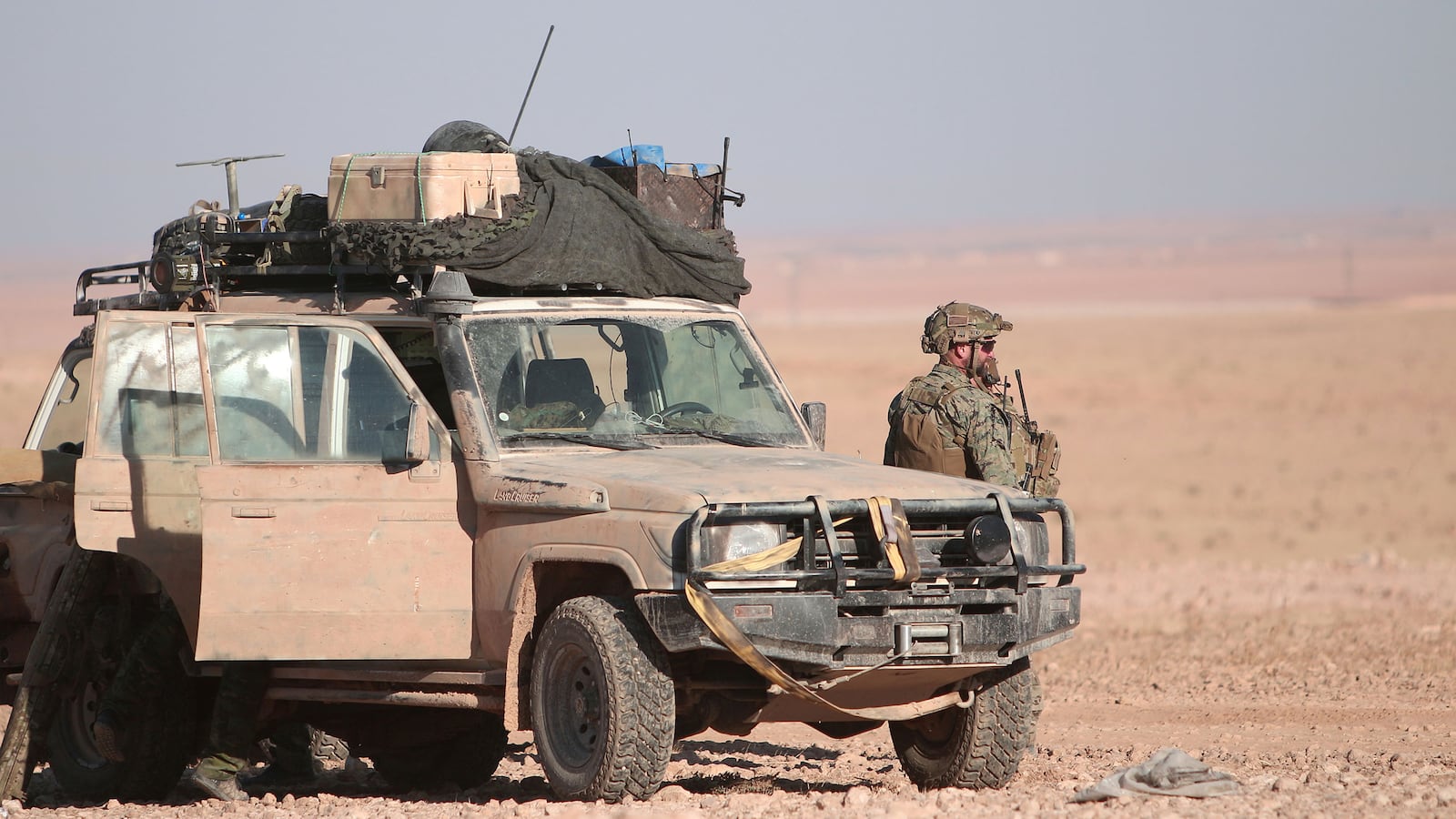The U.S.-led coalition in Syria has shot down the pride of Iran’s drone fleet, heating up the little-noticed drone war Iran has been waging on behalf of the Assad regime over the past five years.
In a statement released on Thursday, the coalition said it shot down a pro-Assad regime drone “similar in size to a U.S. MQ-1 Predator” after the drone dropped a number of munitions near coalition forces training and fighting with anti-ISIS rebels at At Tanf.
The U.S. description of the Iranian-made drone as Predator-sized, taken together with Hezbollah’s broadcast of a video feed showing an Iranian drone shadowing a U.S. MQ-1 Predator near At Tanf the day before the downing as well as reporting from CNN, point to Iran’s Shahed-129, the most capable unmanned aerial vehicle in Tehran’s arsenal, as the downed drone.
Like much of Iran’s drone fleet, the Shahed-129 looks like a copy of Western counterparts, resembling a cross between a U.S. Predator drone and an Israeli Hermes 450. Iran is fond of touting various vaporware drone models for the cameras, occasionally claiming them to be capable of carrying out airstrikes. Nonetheless, the Shahed, Iran’s attempt at a medium altitude long endurance class drone, is the only Iranian model in production known to be capable of striking ground targets, sporting two hardpoints that can carry Sadid air-to-ground missiles or bombs.
Iran rushed its drones to the assistance of the Assad regime as early as 2012, the same year it first teased the existence of the Shahed-129 during the Islamic Revolutionary Guard Corps’ Great Prophet 7 exercises. But the Shahed would not make an appearance in Syria for another two years, leaving Syria with only Iranian tactical reconnaissance drones like the Ababil-3, Yasir, and Mohajer-4 to provide intelligence, surveillance, and reconnaissance for the regime.
Following a much-hyped rollout ceremony for its entry into production in September 2013, the Shahed made its public debut in the skies over Syria months later in April 2014, showing up in rebel-filmed footage of the aircraft over the rebel enclave of East Ghouta in the Damascus suburbs.
But despite stock footage of the Shahed smoking test targets with its Sadid air-to-ground missiles in its 2013 Iranian TV rollout, questions about its ability to engage ground targets persisted as the drone appeared relegated to a surveillance role. Rebel footage of the Shahed-129 flying over Syria showed no clear evidence of munitions attached to the hardpoints under its wings, with rumors that Iran was having problems with the production with the munitions.
It wasn’t until February 2016 that the world learned the Shahed-129 was capable of living up to its billing as an armed drone. Iranian TV broadcast footage of the Shahed flying over then rebel-held held Aleppo and striking targets below. The videos, geolocated by Iranian arms analyst Galen Wright, show Sadid missiles slamming into a group of purported rebel fighters and hitting a building in the village of Halasah, providing air support to Revolutionary Guard-backed militias operating below.
While other new drone owners have been content to broadcast frequent updates about the use of their robotic aircraft in combat, Iran has since become rather quiet about the Shahed’s operations in Syria—surprising given its penchant for chest-thumping propaganda about its drone capabilities.
That is, of course, until Thursday. The coalition’s revelation that a very Shahed-129-like drone was dropping munitions on targets in At Tanf shows that the Iran’s drone strike capability likely wasn’t just a one-off for the cameras and that it may have been used to engage other rebel targets since its February 2016 combat debut.
But that’s still not enough to crown Iran as a drone power or the Shahed as an uniquely fearsome threat just yet. In the footage of the Shahed chasing a U.S. Predator drone that Hezbollah broadcast on Wednesday, a narrator darkly intones that “we could shoot you down anytime, but we take pity on you.” Annoying as it may have been for an American Predator to have an unwanted sidekick, the threat of Shahed-129s downing drones or any other aircraft is little more than a bluff, as the Shahed has no known air-to-air weapons.
Still, the Shahed-129’s operations in Syria show that Iran has been able to at least keep up with some of its peers in fielding an armed drone capability. And given the collision course the U.S. and Iran appear to be on in the region, it may not be the last time that American and Iranian drones mix it up in the skies of the Middle East.
Iran has signaled that it’s unwilling to accept a U.S. presence in formerly ISIS-held areas as the group crumbles, challenging the American footprint by sending militias supported by Iran’s Islamic Revolutionary Guard Corps (IRGC) uncomfortably close proximity to American special operators at At Tanf. The U.S. has responded with occasional brushback airstrikes against the groups, leading to fears that the collapse of ISIS could set up a wider conflict with Iran.






